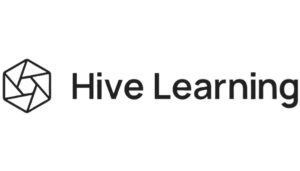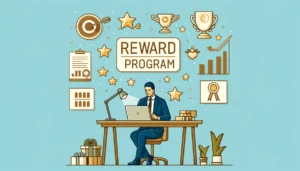HRD Roundtable Report: The Future of Inclusion: Understanding the Metrics for Belonging, Diversity & Inclusion
- 9 Min Read
Organisations are increasingly making public commitments to driving D&I within their organisations, both because of the moral necessity but also to drive a strong culture. Some of these commitments however are more easily measurable than others – building figures on recruitment and wage equality is more straightforward than understanding the level of inclusion within your […]
- Event Types
- Date of Event: Nov 25, 2021


Organisations are increasingly making public commitments to driving D&I within their organisations, both because of the moral necessity but also to drive a strong culture. Some of these commitments however are more easily measurable than others – building figures on recruitment and wage equality is more straightforward than understanding the level of inclusion within your business. When it is experience that drives engagement, culture and retention, how can people leaders better understand the actual sentiment of belonging of their employees?
This session was facilitated by Kath Ennis, Senior Talent Director, Publicis Groupe, joined by Daniela Porr, EMEA HCM and ED&I Specialist, Workday.
Transparency and access
Transparency was a central theme, but how do we move beyond the basics of reporting? The so what is key – having an action plan on what to do with the data, rather than just releasing it on its own. It’s not necessarily about having the answers immediately but showing a commitment to responding.
The group discussed the importance of bringing employees into the process on the level of detail that they want to see. What’s the best way to break down what we’ve learnt? How much detail should we ask employees to disclose? There is a lot to bring into the inclusion conversation – one participant shared that is often feels like they uncover more and more areas everyday that need considering.
How do we bring managers into the conversation? Some participants shared how they’ve linked inclusion outcomes to manager performance reviews in order to help bring leaders to account. But there is also a conversation to be had about who should have access to this data. How do we balance transparency and oversight with privacy?
Asking the questions
We need to think about the ways in which we ask people to disclose and how that can affect the outcomes we find. One participant shared the work they did with a behavioural science organisation called More Than Now. This helped them run control trials to see different outcomes and uptake levels, to better frame their questions to increase engagement and actually find the answers they were looking for.
Changing status also need to be taken in account, particularly why someone might disclose differently from one report to another. For example, one organisation found that their percentage of employees with a disability decreased in their last review. However, their turnover hasn’t been particularly high. So what has changed here? Is it that individuals’ identifications have genuinely changed, or that they no longer want to declare to their employer? Does that then speak to another deeper issue that needs exploring?
How often should you survey? Workday make their surveys ongoing rather than annual, as inclusion is an experience constantly in flux. They conduct small surveys once a week, meaning they get frequent, confidential feedback that they can action quickly and that managers can respond to easily.
According to a recent Workday study, less than 40% of European organisations actually regularly conduct inclusion and sentiment surveys, so the group was ahead of the curve!
Localising and standardising
Another question to ask is how we quantify the categories we use. This is particularly the case in in ethnicity reporting which often needs to be viewed through a localised lens. What does racism look like in different parts of the world, on the ground? Who is at risk?
UK government classifications might be able to be stretched to Europe, but probably won’t be as applicable in Brazil, for example. However, endless options make data impossible to be consistent and understand or compare on a global scale. We can’t draw a line ourselves on what makes a valid identity.
Depending on your location, there may be different sensitivities to take into account both culturally and legally. Various countries within the EU don’t allow employers to ask about ethnicity. Many parts of the world still have negative attitudes towards being LGBTQ – how do we tackle this?
External frameworks can be helpful here. Several participants shared the value they’ve found in using UN classifications to give some consistent options internationally. Others use local census categories to better speak to local nuance, or simply include self-describing as a clear option. The European Commission Guide was also cited as a good resource.
Intersectionality and lived experience
One participant kicked the discussion off by sharing their experiences with the NHS Race Equality Standard. This goes more into depth in reviewing how different groups of individuals actually progress within the NHS. E.g. who is facing disciplinaries, who is getting promotions, whose applications are being accepted? This helps connects the dots on lived experiences and inclusion, making it possible to spot hotspots.
Intersectionality also contributes to lived experiences. What does it actually feel like to be a colleague, someone made up of many different facets, working within the organisation? One tool for this is Workday’s VIBE Index – this can compare intersecting identities across various outcomes (promotions, retention etc) and find patterns that were previously invisible.
Inclusion conversations often tend to centre around ethnicity and gender, but awareness is growing around characteristics that need attention. One participant shared their additional focus on broadening the conversation to their neurodiverse colleagues, and how it has changed their approach to things like performance reviews. How can we work collaboratively with neurodiverse colleagues to better train managers to support their entire teams in the ways that are most impactful?
Social mobility is also an important area to consider – one participant raised their work with ex-military personnel. They have specific challenges in re-joining the civilian workforce but are often missed.
Are we talking about neurodiversity in the right way? To return to the issue of disclosure – although the HR profession uses and understands terms like neurodiverse or disability, is that something everyone identifies with? Would they choose not to disclose something about themselves that they could get support from the business in, because they don’t consider it under that umbrella?
Where are we still finding barriers/risk?
This kind of work takes investment and transparency can come with its own risk. There is still a need to make a distinct business case to other leaders (even within HR and people teams) on the value in working on belonging. Barriers may for example come in the form of legal teams concerned about disclosure, privacy and releasing results that might not be complimentary to the business. Where can we find support? One participant shared the tip of broadening your network to legal organisations for supporting case studies – if they can make it work, why can’t we?
The conversation also returned to sensitivity here. For employees who perhaps aren’t able to be open about their true selves due to local laws, how can employers make it clear that they are welcome? How can we make them feel seen without asking them to out themselves?
Is there a bigger role for organisations to take in challenging some of the legal barriers?
For most organisations though, this comes down to leadership, showing care for all employees and being explicit in inclusion as a global standard. This can’t be achieved in a day or one-off event but needs to be built into the core of how the business functions. One participant shared their success in reframing their work for National Inclusion week – rather than focussing on difference, they made the messaging about keeping everyone in the room. They created a series of videos with employee stories, each in the local language of the person with subtitles. This makes diversity explicit and accepted as part of the fabric of the business.
Unconscious Bias
Unconscious bias brought a bit of controversy to the group in terms of efficacy. Some are moving away from unconscious bias training as it doesn’t tackle the systemic challenge but relies on individuals changing their behaviour (and isn’t that successful in that either!). The general consensus however was that unconscious bias training is a useful tool for opening the conversation and generating awareness, which is still valuable.
An alternative is tools like the Human Library, where various people from different backgrounds and walks of life come to the organisation and engage in real open conversations with employees. This brings to life and really humanizes the lived experiences of people that they otherwise would maybe never meet or move in the same circles as. They are no longer an abstract.
Employee led networks are also valuable in bringing people together within organisations. Being able share openly and talk freely builds a sense of belonging. This works for many different kinds of groups – from BAME and LGBTQ+ through to employees at different stages of their lives, like parents and carers or those experiencing menopause. Once well established, these groups can be opened up to other people within the organisation, to help educate and raise awareness.
It’s also up to the organisation to embed change into practice. In processes like recruitment for example – one participant shared their work on ensuring interview panels were always diverse and putting in the pre-work to make sure everyone was on the same page on what they were looking for in a successful candidate. That way, biases can be challenged by the group as and when they arise – what is it you prefer about this candidate over that one?
What’s next?
Change is often incremental, and it can be difficult sometimes to see progress, particularly in an area as personal and emotive as belonging. There was unfortunately a consensus among the group that it can be easy to get bogged down in what hasn’t yet been achieved.
But let’s continue to be aspirational! There is much to do but changes made now will be felt down the line in years to come.
Resources mentioned in the discussion
Workday VIBE Solution and the VIBE Index
Workday’s research report: The state of equity, diversity, and inclusion in Europe
TFL D&I Impact report 2019-2020








